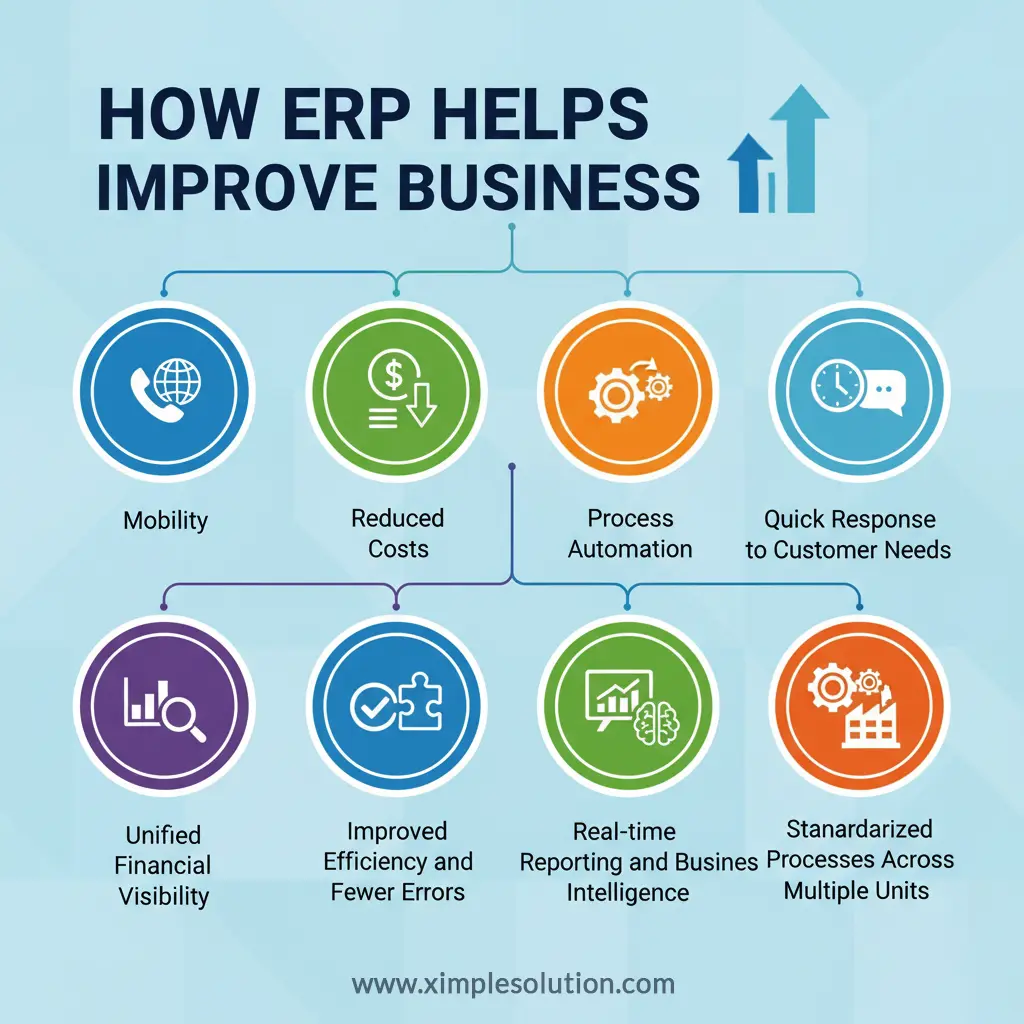Many people have questions about ERP: what is an ERP system? What does Enterprise Resource Planning mean in business? Why do you need an ERP system? What is the purpose of an ERP system? What is Simple ERP? What does ERP stand for? What is the price of ERP? What is the best ERP for distributors and wholesalers? What is ERP in finance? What is ERP workflow and payroll?
It’s challenging to answer all these questions in one article. Here, we explain what is an ERP and how it helps business growth. ERP stands for Enterprise Resource Planning.
ERP is an integrated software application that standardizes and streamlines business processes to improve productivity, efficiency, and communication. An ERP system provides easy access to information for better business decisions. ERP integrates business processes across all functions, including accounting, finance, HR, purchasing, distribution, manufacturing, warehousing, inventory management, sales, and more. ERP systems work on a single database with standard data definitions.
ERP was first designed for manufacturing companies to improve operational efficiency. Now, all industries, including wholesale and distribution, retail, eCommerce (B2B and B2C), services, education, hospitality, healthcare, financial services, and government, use ERP systems to streamline business processes and stay competitive.
By the late 1980s, MRP expanded to include Financials, HRMS, Order Fulfillment, and Procurement. In 1990, Gartner coined the term Enterprise Resource Planning to describe applications integrating end-to-end business processes.
Over the next two decades, ERP systems expanded to Supply Chain Planning, Project Management, Customer Relationship Management, and Warehousing. This phase is called Extended ERP or ERP II.
The finance module in an ERP system automates tasks performed by finance staff, including clerks, accountants, and managers. It ensures all transactions are accurately accounted for and reported automatically.
An ERP system workflow is a configurable sequence of activities in an ERP system. Modern ERP systems allow different user groups to customize workflows for their needs:
ERP system payroll integrates payroll activities with overall business processes. It handles tasks like calculating pay, breaking down allowances and deductions, computing taxes, and transferring tax deductions to the government.
A good ERP payroll system also tracks loans and advances to employees and integrates payroll data with accounting for a complete process flow.

From the 1990s to 2010, ERP systems were mainly on-premise. Users owned the infrastructure.
From the 2000s, Cloud ERP became popular. The ERP system is hosted by a third-party vendor, reducing infrastructure costs and providing world-class security, automatic updates, and latest technology.
Newer ERP systems, called Post-Modern or Next-Generation ERP, use AI, Machine Learning, and Blockchain, supporting digital transformation.
ERP success depends on user adoption:
The cost of an ERP system includes fixed, running, and hidden costs.
Common causes of failure:
❌ Choosing a product based on cost rather than needs
❌ Poor evaluation of requirements
❌ Incompetent system integrators
❌ Wrong or low-quality data (GIGO effect)
❌ Poor localization (tax and compliance issues)
❌ Lack of clear success criteria
What is an ERP system? It automates business processes and provides insights across supply chain, accounting, manufacturing, marketing, sales, and HR.
It serves as a centralized data hub, providing visibility across departments for faster decision-making.
Automation, integration, data analysis, accounting, reporting, HR management, supply chain management, sales & marketing, tracking, and visibility.